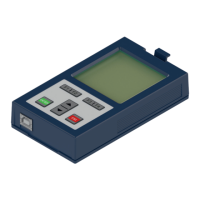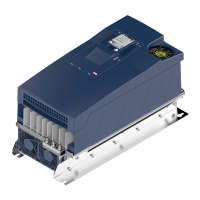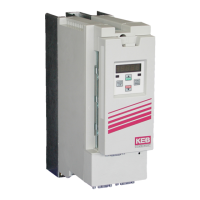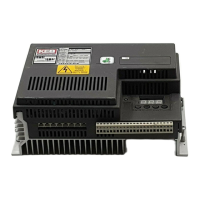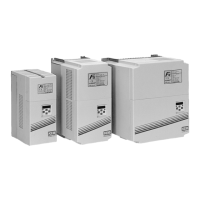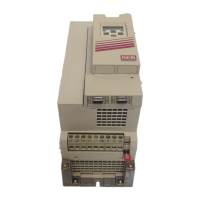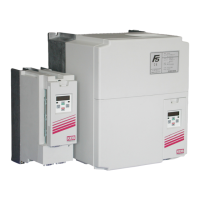6 Motor Control
6.1 Interface to the encoder
The parameters for setting the speed measurement via channel A and B and sta-
tus parameters are contained in the two ec groups.
The parameters are identical except for the change-over of the operating voltage
ec14 and the parameters for data storing in the encoder ec46 / ec47. These are
only available for channel A.
The addresses for channel B have an offset of 0x2000 compared to channel A.
The names of parameters for channel B are the same and end extra with "B".
Example:
0x2810 encoder type → Adjustment of the used encoder on channel A
0x4810 encoder type B → Adjustment of the used encoder on channel B
Terms and definitions used here
Since some terms in connection with encoders are often misleading, here there is
a description of some terms used in this manual:
Rectangular difference signals according to RS422/RS485 specification
Sinusoidal difference signals with 1V
ss
amplitude
Increments per revolu-
tion
Number of signal periods per revolution
Unit
"increments" and posi-
tion in increments
The resolution per signal period is 4 for encoders with incremental sig-
nals.
That means, the resolution per revolution is the number of signal periods
x 4.
¼ signal period is called here "increments".
If, for example, a TTL encoder with 2500 signal periods per revolution is
rotated by one revolution, the position in increments changes by 10000
increments.
This increment value is not used in the actual position dis-
play in ru33 or the st parameters.
Standardisation ru33: 65536 always corresponds to 1 revo-
lution
The position within one signal period is also determined in case of sinus-
oidal incremental signals.
This resolution is always 13 bit and is added to the position in incre-
ments.
The accuracy is dependent on the encoder, lines, evaluation circuit, sig-
nal frequencies, component tolerances and is significantly lower than 13
bit.
Zero signal or refer-
ence mark
With rotary encoders, one speaks of zero signals, with linear encoders of
reference marks. But it is physically the same and is a digital signal,
which is 1-active only at a certain signal period and 0-active otherwise.
Thus it forms reference points at non-absolute encoders, which must first
be passed in order to be able to evaluate them.

